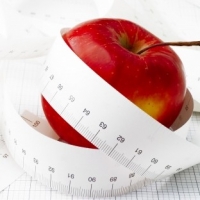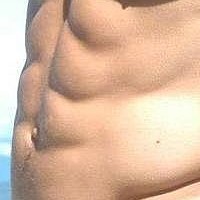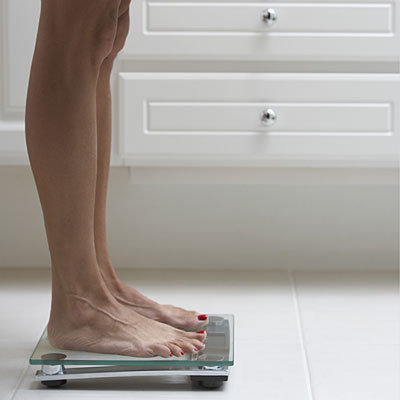The Low Cholesterol Diet Plan. Are You Doing It Right?
Fast food, doughnuts, chips, oily fried stuff. Such foods are turning out to be a norm in many of our diets. It’s no wonder why so many of us are struggling from high cholesterol. Just to clarify, cholesterol in itself is not negative. In fact, we do need cholesterol especially good cholesterol (HDL) for our bodies to function well and stay strong. It is the built up of bad cholesterol (LDL) and triglycerides (TG) that causes you to be at risk of heart disease. What we hope to accomplish while on the low cholesterol diet plan is to decrease our bad cholesterol while improving or retaining the good ones. We will show you how you can begin improving your good cholesterol intake with some minor corrections to your diet.
Rule #1 : Keep Saturated Fat Intake To A Minimum
Saturated fat will raise your bad cholesterol levels. This can be found in the fatty parts of meat, butter and full cream dairy products. Such food stuffs are typically used to make our food yummier but why is it so unhealthy?
80% of the cholesterol in our body is made by our own liver. Ever thought about what the liver uses to create cholesterol? It uses saturated fat. Just by lowering the amount of saturated fat consumed, you will be amazed as to how this can effect your cholesterol levels. Here are 10 very simple ways to cut down your saturated fat intake:
1. Remove all visible fat and skin from meat prior to cooking
2. Consume more white meat than red meat
3. Limit your red meat consumption to 3 times a week
4. Consume more low fat or skim dairy products than full cream ones
5. Use a vegetable spread e.g. canola spread in replacement of butter
6. Consume fried food only once a week
7. Refrain from buying mince meat from supermarkets. Make your own using lean meat
8. Always go for fresh meat, avoid processed meat products that doesn’t bear a resemblance to real meat e.g. pepperoni
9. Use less creamy dressings like Thousand Island and more vinaigrette based ones
Rule # 2 Incorporate Good Fats Into Your Low Cholesterol Diet Plan
Small amounts of good fats can in fact help to decrease your LDL and TG levels and maximize your cardiovascular well-being. With that being said, you don’t have to consume large amounts of good fat to acquire the benefits.
You can designate good fats into 2 groups:
Monounsaturated fats: These are the good fats found in olive oil, peanut oil, avocados, etc.
Polyunsaturated fats: Found mainly in oily fish, sunflower oil, corn oil, nuts and seeds
Use the following ways to add more good fats in your diet:
Start using unsaturated cooking oil when preparing your meals
Eat more unsalted nuts on a regular basis
Have a serving of oily fish 2-3 times a week and taking a daily omega-3 supplement can also very useful especially if you have elevated LDL and TG
Use a spread made of nuts rather than butter on your toasts
Throw in a good dose of flaxseeds or pumpkin seeds in your salad or food
Rule #3 Keep Away From Trans Fat
The texture and feel of processed foods can be improved by using trans fat. By cooking at very high temperatures, cooking oil can be changed into trans fat. Why trans fat is considered damaging because it gives you more bad cholesterol than good cholesterol.
Trans Fat can be found in most processed foods and foods that have been deep fried. As consumers, we can be happy with the fact that many food manufacturers are doing what they can to remove trans fat from their food.
Make sure you read the nutritional labels on the food stuff you buy when you are out grocery shopping. Anything that contains ‘partially hydrogenated oils, hydrogenated oils and vegetable shortening’ means that the product contains trans fat. As much as we try to avoid it, it is not possible to totally exclude it from our meals. However, do make a mindful effort to choose foods that are trans fat free or at least low in trans fat (< 1g per serving).
Rule #4 Fiber, Fiber And Fiber
Dietary fiber is your best weight loss ally. It helps to promote bowel health, manage our blood sugars, sustain a healthy weight and it even helps to lower our cholesterol levels. There are 2 types of fiber: soluble and insoluble.
Whole grains and vegetables can supply you with good amounts of insoluble fiber. It helps to improve bowel movement by adding bulk to the stools. By doing so, it also increases the body's discharge of bile salt and bile juice which are excreted along side with the stools. Cholesterol is used by the body to make bile juices and salts. So essentially, insoluble fiber helps to improve the body's usage and metabolism of cholesterol.
Soluble fiber is found primarily in beans, peas, apples and citrus fruits. It binds the dietary cholesterol in the gut and interferes with the cholesterol absorption process. If you want to reduce your cholesterol absorption by 20%, make your meals rich in soluble fiber.
Rule #5 Eat Less High Cholesterol Foods
Your main aim is to ultimately lower the amount of saturated fat that you consume. There are however some foods when consumed in large quantities can raise your cholesterol levels. Foods rich in dietary cholesterol include egg yolks, seafood, crustaceans roe and offal. You are doing yourself some good by limiting the consumption of such foods to just twice weekly. When it comes to egg yolks, 3 times a week is more than adequate for most people.
Remember, high cholesterol is a key risk factor for cardiovascular disease as well as diabetes. You should be happy to know that high cholesterol is something that can be averted as well as treated. Start by giving your diet a cleanup with my 5 golden rules of the low cholesterol diet plan. Your cholesterol levels will improve and you will probably lose a few inches off your waistline too!
-
3 Easy Ways to Make Vegetables Taste Better
-
This System Will Burn The Most Fat For You! What Makes You Fat Is Not What You Think! - Fat Burning Program
CLICK HERE NOW to DOWNLOAD The Fat Burning Furnace Program and Lose 20
-
Atkins Bankruptcy: Your New Decisions To A Healthy Life!
Atkins Nutritionals filed for bankruptcy at the begi
-
How Can I Lose Weight In A Week
Im going to show you how to lose weight in a week while you reshape yo
-
Why Isogenics is Effective in Body Cleansing
Receiving the body one constantly wanted is not that complicate
-
Burn Fat Quickly
Are tired from going to the gym? By reading this article you will know
- DON'T MISS
- The Best Ways to lose weight and Stay healthy
- Fast Weight Loss Tip To Acquire A Slim And Healthy Body
- Best Fat Burning Secrets for Long Lasting, Permanent Results
- Weight Loss Goal - My 100 Calorie Trick That Works!
- Diet Scams : How to Avoid Getting Ripped Off
- The Age-Proof Diet
- How Safe Is Bariatric Lap-Band Surgery?
- Don抰 Be Misled. The Best Attitude and Action for Weight Loss
- Exercises to Burn Arm Fat and Get Rid of Arm Flab
- How To Get Rid Of Excess Weight With Natural Supplements That Are Best?




